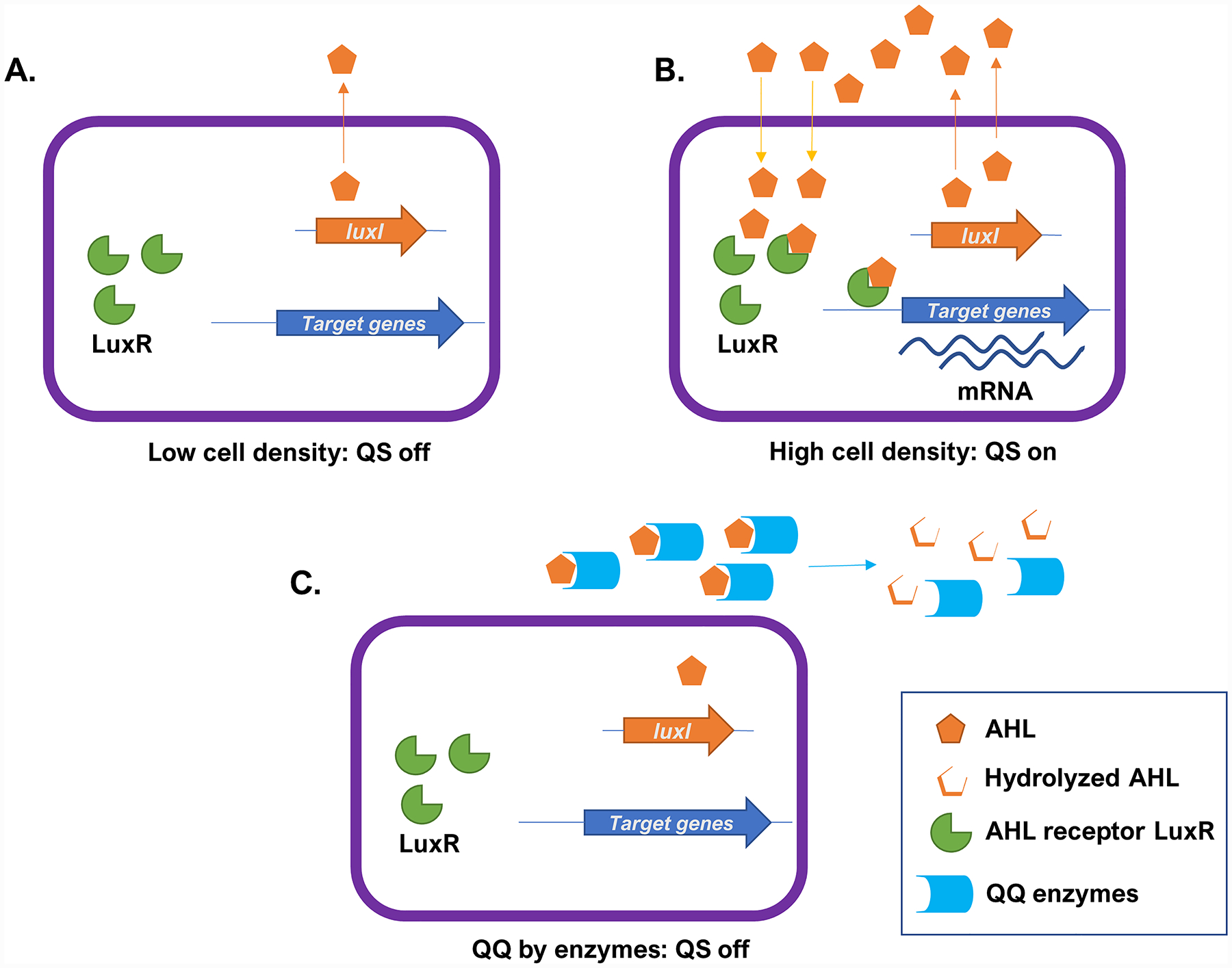Fig 2.

Representation of AHL mediated Quorum Sensing (QS) (A and B) and enzymatic Quorum Quenching (QQ) (C). (A) Bacteria encode a LuxI synthase producing N-acyl homoserine lactones (AHLs) in the cytoplasm, which can diffuse out of the cell. At low cell density, the extracellular concentration of AHLs remain low and QS is off. (B) When bacterial density increases, so does the extracellular AHL concentration. Upon reaching a threshold level, AHLs bind to their cognate cytoplasmic LuxR receptors. The AHL bonded LuxR acts as a transcription factor and can triggers the expression of target genes, including the production of more AHLs, and resulting in population-wide changes in gene expression profiles and bacterial behavior. (C) QQ enzymes degrade extracellular AHLs, reduce the AHL concentration, and prevents the signaling molecule to reach the concentration threshold that triggers QS.
